En cours
A Venir
Billetterie
Collections en ligne
Actualités
Boutique
Restaurants et privatisation
08.05.2021
Judit Reigl was born in Hungary in 1923 and arrived in France in 1950, after eight clandestine attempts to cross the Iron Curtain. In Paris, she met up with Simon Hantaï, a fellow student at the Beaux-Arts in Budapest. Hantaï introduced her to André Breton in 1954, who was seduced by her surrealist paintings and invited her to exhibit at L’Étoile scellée.
Éclatement (1955-1958), the Centre de dominance (1958-1959) and the Écriture en masse (1959-1965).
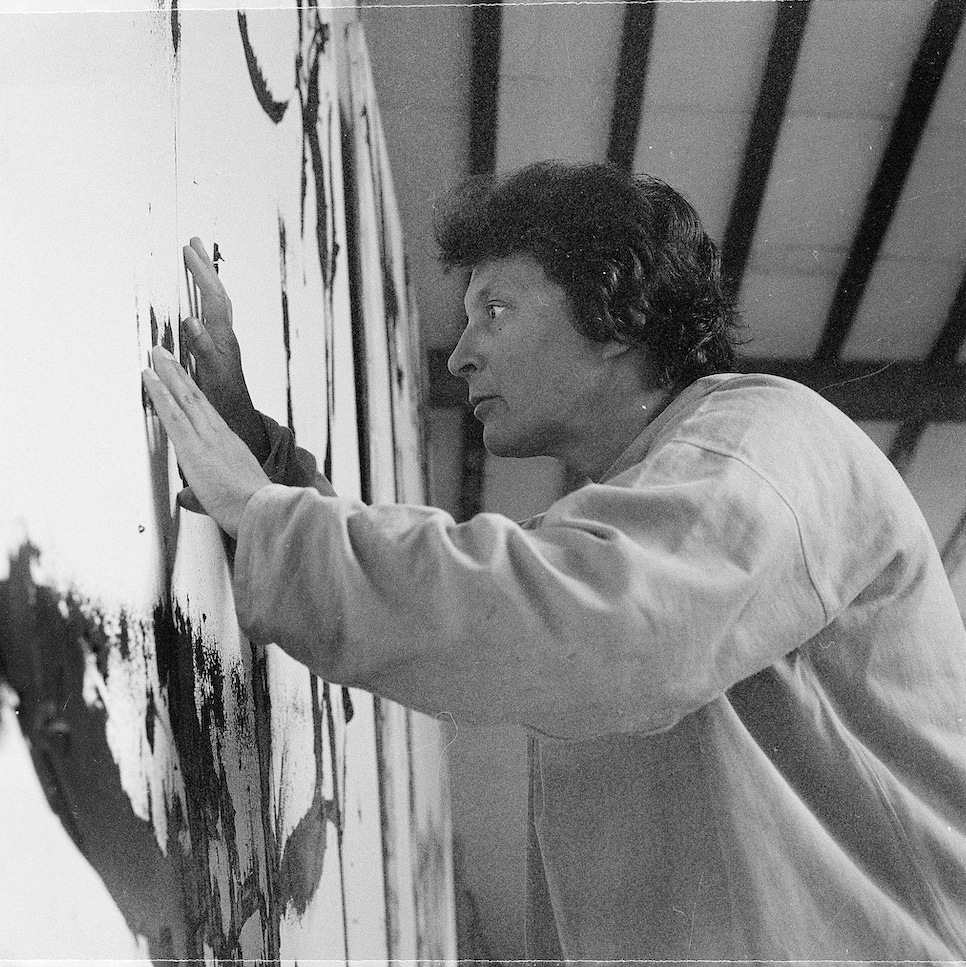
At the same time, the abandoned canvases were kept on the floor of her studio and trodden on, covered with pictorial excrement, then reworked: these are the Guano series (1958-1965), the physical and material embodiment of the astounding ambition of her gestural works.
More than the formal elegance of gesture, it is its authenticity that Judit Reigl seeks – an authenticity that leads her to an unforeseen figuration made up of anthropomorphic torsos (mainly male) painted with force in a state of suspended animation situated between flight and fall and occupying the entire surface of her canvases(Homme, 1966-1972 and Drap-Décodage, 1973).This work culminates in the abstract series Déroulement (1973-1985) in which the artist develops an automatic writing made up of coloured traces which emerge from the back of the canvas. In her final abstract series from 1980-1988, produced according to the same principle, monumental rectangles gradually appear, evoking « doors » through which human silhouettes emerge (Face à…, 1988-1990). In the wake of these representational appearances, the naked bodies multiply: they appear alone or in groups, in front or levitating, but always in silhouette against a plain background, reduced to the essence of their being. This return to the figure bears witness to a constant obsession on the part of the artist: that of making the body – active or represented – the very subject of her painting.
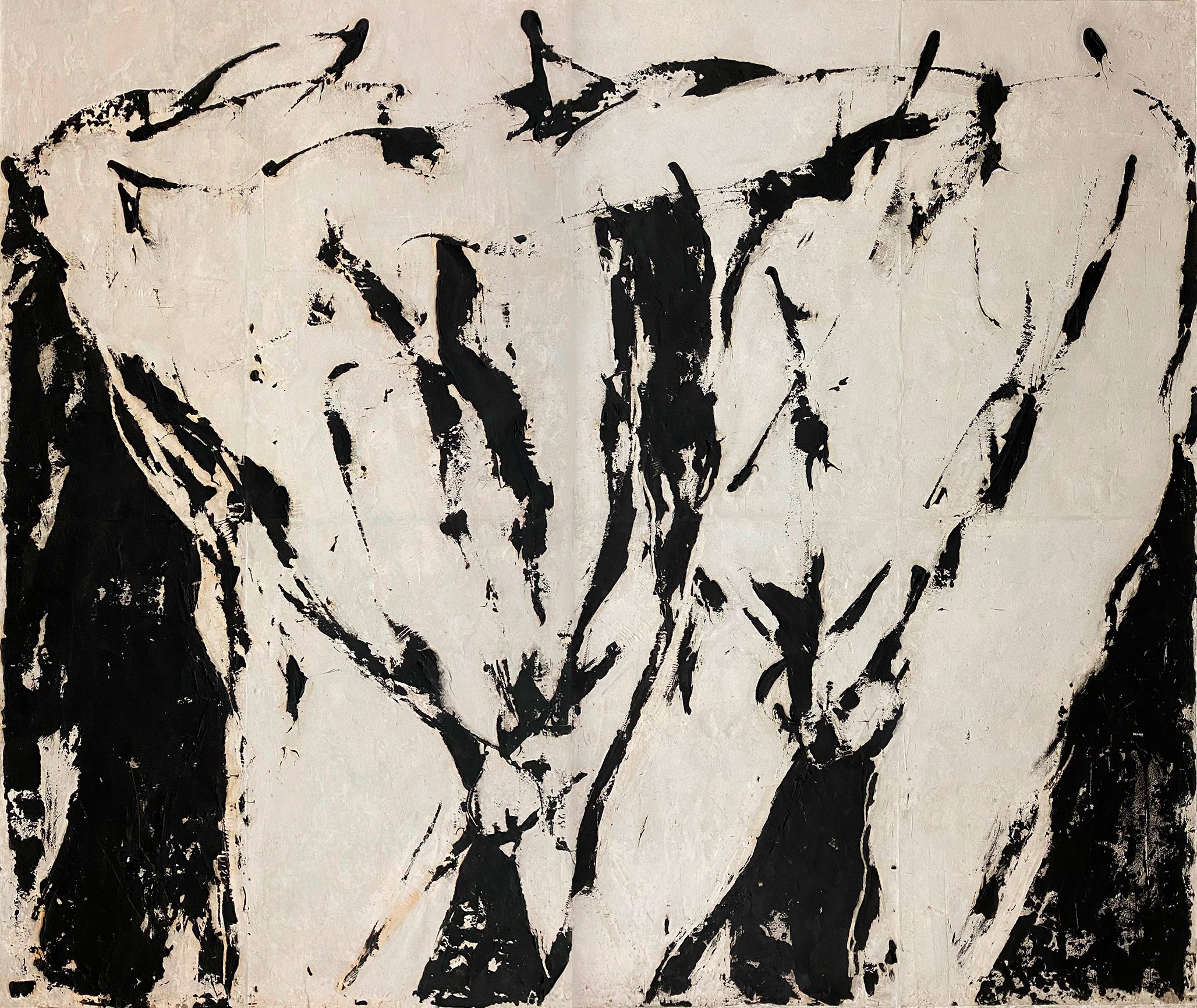
The fresco, created in 1966 and part of the Homme series , was located in the artist’s studio in Marcoussis. In order to preserve this major work of art in her house, which was about to change occupant following the death of Judit Reigl on August 6, 2020, the Endowment Fund and the Fondation Dina Vierny came together to find a solution for the fresco to be saved and conserved in a Parisian institution facilitating loans in case of demand for exhibitions. This operation was directed by Janos Gat, member of the Endowment Fund and financed by Pierre and Alexandre Lorquin, directors of the Dina Vierny Gallery in Paris. The delicate operation was carried out over a period of four months by Erika Szokán, a curator specialising in the fresco technique.
“ From February 1966 onwards, this same (abstract) writing metamorphosed independently of my will, rather against it, into an increasingly anthropomorphic form, a human torso. Imperceptibly at first, then more and more consciously after 1970 I tried to intervene, to underline the emerging aspect of these erect bodies. ”
J. Reigl in the exhibition catalogue Judit Reigl, Paris, Galerie Rencontres, 1973
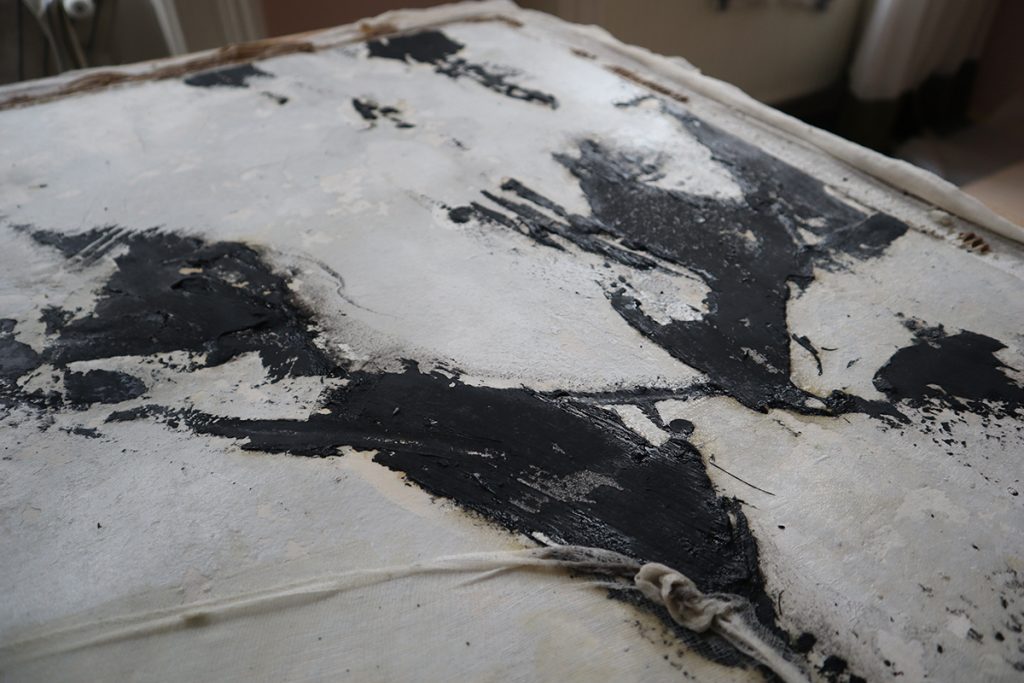
This work was painted directly onto a wall because, according to the artist, she had no more blank canvases to paint on at that time. It comes from a pivotal year, as it corresponds to the moment when the Écriture en masse series gradually gave way to anthropomorphic forms. Automatic writing had become anthropomorphic writing and human bodies began to emerge from her abstract compositions. In this way, the human and subjective gesture, this non-alphabetical writing which was an instrument of her painting in Écriture en masse series gradually became very subject of what she was expressing on the surface of the canvas: the quest for the mysteries of Man.
Uniquely in the Homme series where usually only one body is painted on the canvas, two figures are depicted here. Judit Reigl referred to several stories in the interpretation of this work. The most obvious is the struggle between Jacob and the Angel and, less well known, the legend of Saint Marciana of Toledo, a Christian martyr who died in the arena like a gladiator after having thwarted the first assaults against her with her courage.
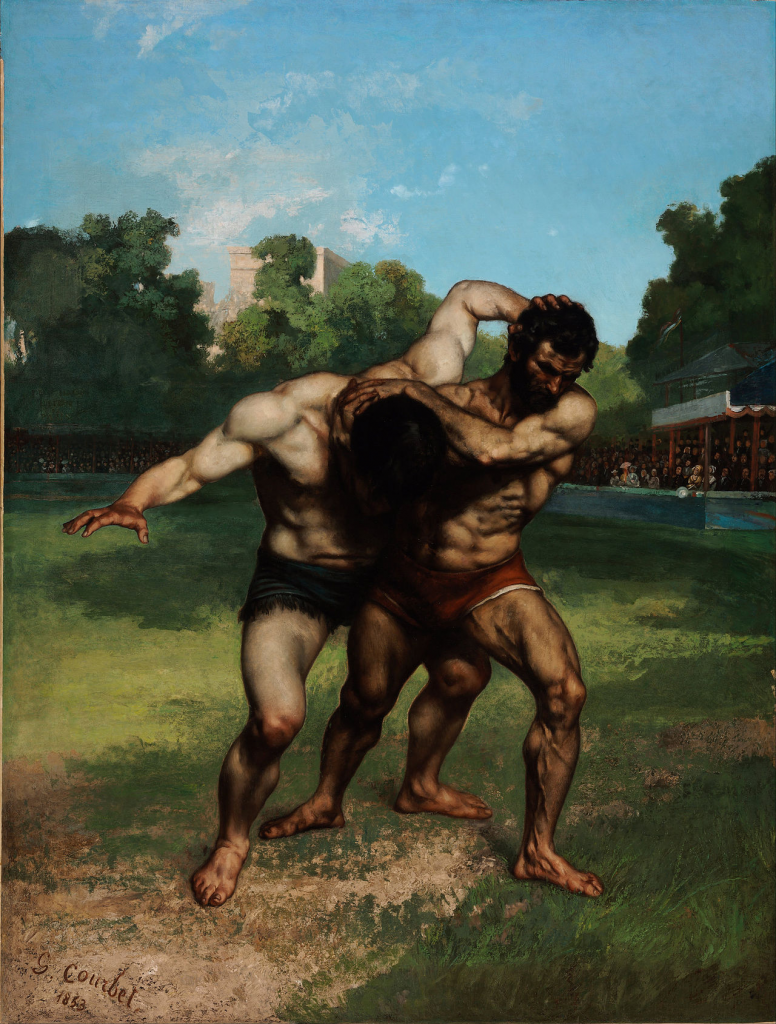 |  |
Reigl has often used the term « my wrestlers » about her fresco, simply because the composition comes from Courbet’s Lutteurs (Wrestlers) which is in the Museum of Fine Arts in Budapest. Lutteurs was the first important nineteenth-century work she saw at the age of eighteen, and it had a major influence on her entire career.
The arrangement of the two bodies can also be compared with various earlier works by the artist, in which the bodies fight, as in La lutte de Jacob avec l’ange (1948), or embrace, as in Amitié entre paysan et ouvrier (1948). Judit Reigl commented on the latter work: « The painting entitled Amitié entre paysan et ouvrier (Friendship between Peasant and Worker), , which inspired me to paint Les Quatre Tétrarques de Venise (The Four Tetrarchs of Venice), , was to be the model for a large-scale fresco. As I have already said, when I had to say goodbye to Betty in Venice, it was next to this striking statue. I asked heŕ to draw it and send me her sketch and, on this basis, I painted from memory my picture on which the worker and peasant « emperors » represent us both. The resemblance to Betty is deliberate, I – as always – am more difficult to recognise »
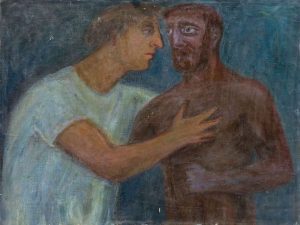 | 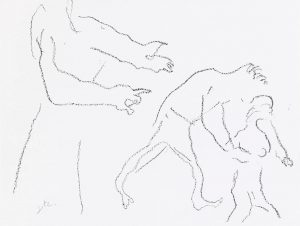 |
The fresco in the studio, which at the time was behind the wall of her bed, can therefore be seen as the representation of an embrace between her and Betty, her lifelong love, with whom she was living at the time of the Homme series . This loving embrace could be understood as a depiction of a universal allegory of love and mating, tending to express more generally what animated Judit Reigl’s work: the cosmic mysteries of existence. Reigl was indeed greatly influenced, from her youth, by the pre-Socratic theories on the genesis and functioning of the world, as well as by the philosopher Heraclitus’ expression « Panta rhei » meaning that the world is made up of a perpetual movement and a permanent unfolding.
However, in view of the idea of combat that this work also represents Homme , one might be tempted to see in it an interpretation of the theories developed by the philosopher Empedocles according to which the universe is animated by the interaction of two forces: Love and Struggle.
Find out more about our current exhibtion : Andres Serrano. Portraits of America
DISCOVERMentions légales | CGU | Données personnelles | Gestion des cookies
Musée Maillol, 2021
Mentions légales | CGU | Données personnelles | Gestion des cookies
Musée Maillol, 2021